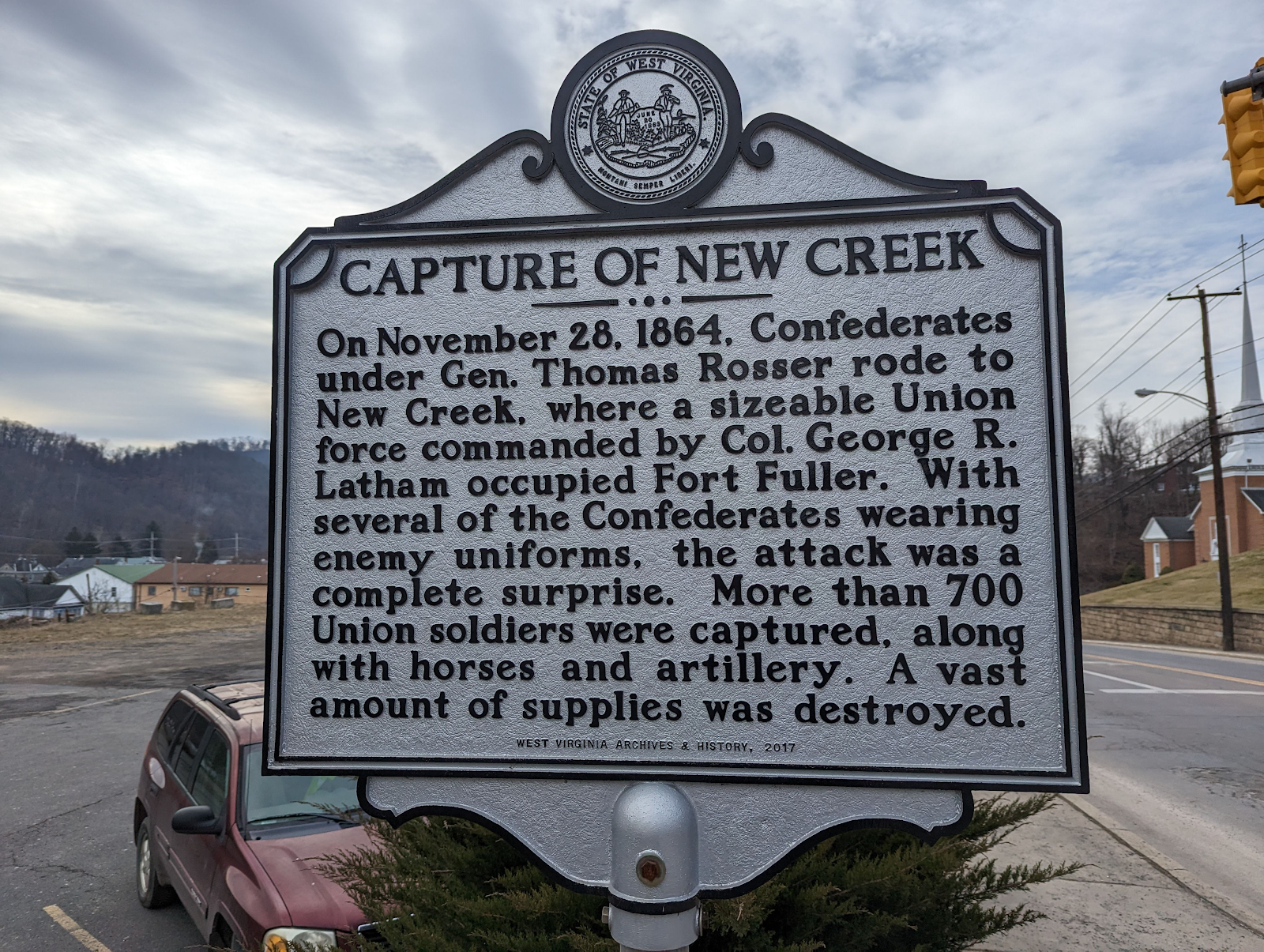May 25, 1862 - First Winchester
May 25, 1862
First Winchester
Winchester, VA (Frederick County)
US- Banks: Colonel George Gordon’s 3rd Brigade
vs
CSA- Jackson: General Dick Taylor’s Louisiana Brigade, reinforced by the 10th and 23rd Virginia
* Following Banks' victory over Jackson at Kernstown...
* Confederate victory, though they lost 16,000 to the Union's 6,500, part of Jackson's Shenandoah Valley Campaign, following his victories at McDowell and Front Royal
* Banks retreats to Williamsport, MD
 Opps. Guess I'll be back for 2nd Winchester....
Opps. Guess I'll be back for 2nd Winchester....
...which I visited in the summer of 2025.
 |
| https://www.hmdb.org/m.asp?m=241604 |
Photographed by Craig Swain, August 25, 2007 |
May 25, 1862
General Stonewall Jackson with 16,000 Confederates defeated General N.P. Banks and 6,000 Federals. On May 24, at Middletown, 12 miles South, Jackson attacked Banks’ army withdrawing toward Winchester, cutting off the rear guard and capturing or destroying a large number of wagons. Jackson launched his attack on Winchester at 5 a.m. May 25. Contesting this thrust was Colonel George Gordon’s 3rd Brigade. General Dick Taylor’s Louisiana Brigade, reinforced by the 10th and 23rd Virginia, succeeded in flanking Gordon on the west, while troops of Jackson’s division pressed Gordon’s center and left. General R.S. Ewell on the southeast approaches to Winchester saw his first attack repulsed. Calling up his reserves, Ewell moved against Colonel D. Donnelly’s Union Brigade. All Federal positions were taken by 8 a.m. and Banks’ army fled North through town. Confederate pursuit was hindered by lack of Cavalry.
*
 |
| https://www.hmdb.org/m.asp?m=241384 |
May 25, 1862 between Confederates under Brig. Gen. T.J. “Stonewall” Jackson and the Federals under Maj. Gen. N.P. Banks began just south of this site. The Federals were driven in retreat through Winchester’s streets with loss of stores and many prisoners.
Confederates engaged, 16,000, casualties 400. Federals engaged, 8,000, casualties 2017.
*
 |
| https://www.hmdb.org/m.asp?m=2616 |
Abram’s Delight is the oldest home in Winchester. 582 acres of land was granted to Abraham Hollingsworth in 1734. The first log house on the site was replaced by the present stone structure built in 1754 by Isaac Hollingsworth, a Quaker, son of Abraham. Family heirlooms and original objects from the mid 18th and early 19th century furnish the home of one of Winchester's most prominent families.
 |
| https://www.hmdb.org/m.asp?m=254266 |
Abram's Delight
“Best wishes to all at your house”
The oldest dwelling in Winchester, Abram’s Delight experienced the passage of both Union and Confederate armies during the war. Although the property stood in the path of the First Battle of Winchester on May 25, 1862, it survived and now illustrates the civilian side of the conflict.
Mary Hollingsworth and her siblings, Jonah and Annie, occupied the house during the war. Standing more than six feet tall, Mary Hollingsworth may have impersonated a man to spy for the Confederates, according to local tradition. She also gave meals and shelter to Union soldiers on several occasions. Early in the war, a soldier wrote, “My best wishes to all at your house, and all those who were there during my stay with you.” William Darnel, of the 3rd West Virginia Cavalry, thanked her for her hospitality in the spring of 1865: “I embrace this mode of bidding you adieu and also to express my thanks for the kindness manifested during my sojourn at your place.”
In the spring of 1864, Union Gen. Franz Sigel and several of his staff members occupied Abram’s Delight. Sigel paid Hollingsworth $5 for her troubles. After the war, she filed a claim with the Southern Claims Commission for damage done to her property. The commission denied her request, however, stating that the damage occurred as result of the “fortunes of war.”
 |
| https://www.hmdb.org/m.asp?m=19508 |
The Hollingsworth Family Settlement
Winchester Downtown - where fighting occurred the first time.
 |
| https://www.hmdb.org/m.asp?m=155108 |






Comments
Post a Comment